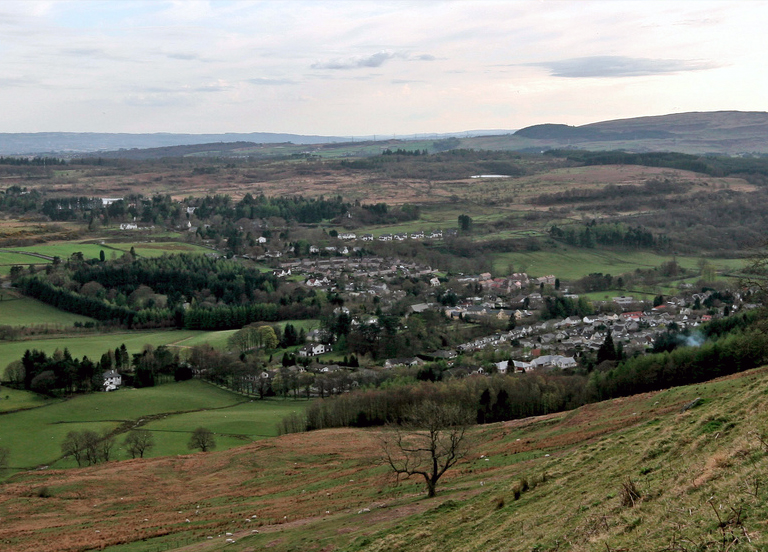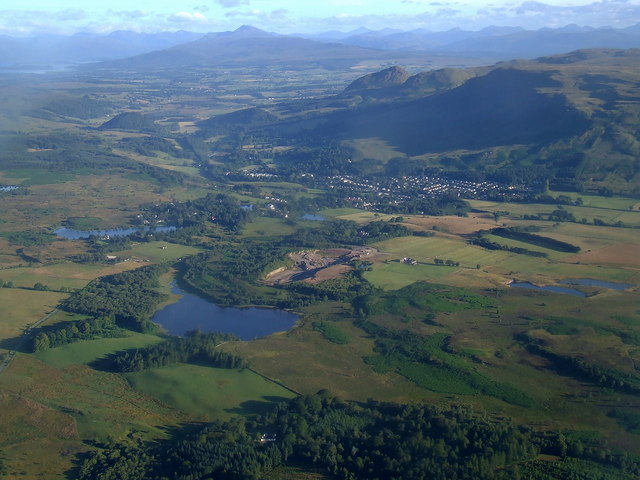Mill Dam
Lake, Pool, Pond, Freshwater Marsh in Stirlingshire
Scotland
Mill Dam

Mill Dam is a picturesque freshwater marsh located in Stirlingshire, Scotland. Situated in a tranquil setting, it is a popular destination for nature lovers and outdoor enthusiasts. The dam itself is a man-made structure, created to retain water and provide a habitat for various aquatic species.
Covering an area of approximately 2 hectares, Mill Dam is surrounded by lush vegetation, including reeds, rushes, and water lilies. The diverse plant life provides a haven for a wide range of wildlife, including birds, insects, and amphibians. Visitors can often spot species such as herons, ducks, and dragonflies, as well as rare plants like the marsh cinquefoil.
The calm waters of Mill Dam support a healthy population of fish, making it a favorite spot for anglers. Common fish species found in the dam include perch, roach, and pike. Fishing permits are available for those who wish to try their luck in these waters.
The area around Mill Dam is also home to several walking trails, allowing visitors to explore the natural beauty of the surrounding countryside. The peaceful ambiance and stunning views make it an ideal location for a leisurely stroll or a picnic by the water's edge.
Overall, Mill Dam in Stirlingshire offers a serene and idyllic escape from the hustle and bustle of everyday life. With its diverse wildlife, picturesque views, and recreational activities, it is a must-visit destination for nature enthusiasts and those seeking a peaceful retreat in the heart of Scotland.
If you have any feedback on the listing, please let us know in the comments section below.
Mill Dam Images
Images are sourced within 2km of 55.97953/-4.3056717 or Grid Reference NS5678. Thanks to Geograph Open Source API. All images are credited.


![1856 valve house, Blane Valley One of five valve houses built as part of the Glasgow Corporation Water Works system to bring clean water from Loch Katrine to Glasgow. This is one of the original three built in 1856, and another, built in 1932 stands close by. These buildings, together with an associated ventilation shaft, and walls, make up a group of buildings which are Category C listed [<span class="nowrap"><a title="http://portal.historicenvironment.scot/designation/LB51146" rel="nofollow ugc noopener" href="http://portal.historicenvironment.scot/designation/LB51146">Link</a><img style="margin-left:2px;" alt="External link" title="External link - shift click to open in new window" src="https://s1.geograph.org.uk/img/external.png" width="10" height="10"/></span>].](https://s3.geograph.org.uk/geophotos/05/45/44/5454499_1a5c4bb7.jpg)
![Valve houses and ventilation shaft, Blane Valley On the left is one of the original 1856 valve houses from the Glasgow Corporation Water Works system which brought clean water from Loch Katrine to Glasgow. On the right is one of the 1932 valve houses. Both were built to control the flow of water in the large water pipes which run mainly below the ground. In the background is one of the ventilation shafts, above one of the pipes, with its very distinctive domed covering. The three structures, together with surrounding walls are Category B listed [<span class="nowrap"><a title="http://portal.historicenvironment.scot/designation/LB51146" rel="nofollow ugc noopener" href="http://portal.historicenvironment.scot/designation/LB51146">Link</a><img style="margin-left:2px;" alt="External link" title="External link - shift click to open in new window" src="https://s1.geograph.org.uk/img/external.png" width="10" height="10"/></span>].](https://s2.geograph.org.uk/geophotos/05/45/45/5454506_7aa86462.jpg)
Mill Dam is located at Grid Ref: NS5678 (Lat: 55.97953, Lng: -4.3056717)
Unitary Authority: Stirling
Police Authority: Forth Valley
What 3 Words
///pigs.cafe.astounded. Near Strathblane, Stirling
Nearby Locations
Related Wikis
Strathblane railway station
Strathblane railway station served the village of Strathblane, Stirling, Scotland from 1867 to 1951 on the Blane Valley Railway. == History == The station...
Blanefield
Blanefield is a settlement in Scotland contiguous with Strathblane's northwestern fringe. To the west is the volcanic plug Dumgoyne, Glengoyne Distillery...
Strathblane
Strathblane (Scottish Gaelic: Strath Bhlàthain, pronounced [s̪t̪ɾahˈvl̪ˠaː.ɪɲ]) is a village and parish in the registration county of Stirlingshire, situated...
Loch Ardinning
Loch Ardinning (Scottish Gaelic: Loch Àird Dùnain) is a body of freshwater in the district of Stirling in Scotland, lying to the south of the village of...
Nearby Amenities
Located within 500m of 55.97953,-4.3056717Have you been to Mill Dam?
Leave your review of Mill Dam below (or comments, questions and feedback).















